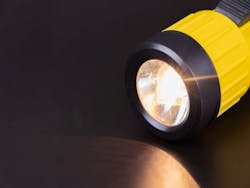For those wondering why microgrid use is growing, a new report on the state of the grid by the North American Energy Reliability Corp. (NERC) might offer some insight.
The report, “2022 State of Reliability,” doesn’t talk about microgrids, but it does describe grid vulnerabilities that are jeopardizing electric reliability. Concern about the state of the grid is part of what’s driving businesses, institutions and communities to install their own microgrids.
NERC is tasked with creating and enforcing reliability standards, and it monitors the bulk power system that serves 400 million people in the continental US, Canada and the northern portion of Baja California, Mexico.
“When we look at events over the last several years, it is clear that the bulk power system is impacted by extreme weather more than ever before,” said John Moura, director of reliability assessment and performance analysis at NERC. “As we transition our system so rapidly, it is vitally important that we are building and operating a system that can be resilient to the extreme weather we might see in the future.”
Here are five takeaways from the report that show why we need to worry about electric reliability — perhaps now more than ever given our increased reliance on electricity for internet connectivity and air conditioning and, soon, transportation.
1. We’re still seeing sweeping power outages
Following the massive power outages known as the August 2003 Blackout and the August 1996 Western Interconnection blackouts, changes were made to smarten and harden the grid.
But last year Winter Storm Uri revealed more holes in the system. The February 2021 freeze in Texas created the third largest power outage in North America’s history, measured in the quantity of megawatts of load lost, according to NERC. At least 210 people died because of the power outage and cold.
2. New problems have emerged
NERC said the February 2021 freeze and other severe weather shows that the interdependency between the electricity and natural gas industries is “a major new reliability risk that must be explicitly managed.”
The problem? Natural gas-fired plants have become necessary balancing resources to integrate renewable energy, and they can be expected to remain so until new storage technologies are fully developed and deployed at scale, NERC said.
But there is a Catch-22. We need power to deliver natural gas. During the Texas freeze, the inability to deliver natural gas caused 27.3% of all generator outages, derates and failures to start during the freeze. In addition, loss of power supply to natural gas infrastructure caused 23.5% of the decline in natural gas production.
3. We can no longer as easily predict when the grid will be at risk
Hot days when air conditioners are running full tilt have historically been the high risk periods for much of the grid. But peril is no longer so easily defined.
“Instead, risks can emerge when weather-dependent generation is impacted by abnormal atmospheric conditions or when extreme conditions disrupt fuel supplies,” NERC said.
The report named several extraordinary events that impacted the grid in 2021, among them Winter Storm Uri, the heat wave in the Pacific Northwest, loss of solar energy in Texas and California (see point 5), wildfires, Hurricane Ida, and thunderstorms and tornadoes.
4. Cyberattack attempts are increasing
The bulk power system withstood an increasing number of cyberattacks in 2021. But “adversaries and organized cyber criminals have demonstrated that they have the ability and willingness to disrupt critical infrastructure. Notably, cyberattacks routinely targeted the digital supply chain. In addition, reports of suspicious cyber incidents (including vulnerability exposure, phishing, malware, denial of service and other cyber-related reports) increased significantly,” said NERC.
There is some good news – the most serious types of physical attacks on the grid declined.
5. Unaddressed inverter issues increased reliability risk
In Texas and California solar plants failed to perform because of inverter issues. This is especially worrisome because in some areas peak demand cannot be met without renewable generation. NERC called for improvements in interconnection requirements and processes and significant updates to its reliability standards to fix the problem.
The full report, which includes the organization’s recommendations to resolve the problems it cites, is available on the NERC website.
Track news about microgrids by subscribing to the free Microgrid Knowledge Newsletter.







